In April 2021, Waymo’s CEO and CFO left the company. In addition, the Chief Safety Officer, head of manufacturing and global supply and general manager of Laser Bear LiDAR business, head of Automotive Partnerships and Corporate Development have also resigned since late 2020.
Waymo’s L4 development model has been set back. Its efforts to develop L4 with the model of “refitted vehicles—road test data collection—trial operation” hit a bottleneck, while companies like Tesla, Mobileye and Momenta adopt the widely-accepted “shadow model” where the data collected by L2 mass-produced vehicles are used to train a L4 algorithm model.
Except for few companies like Waymo and Uber which perform worse than expected, L4 autonomous driving firms in other fields gain momentum. Favored by capital in 2021, they make big strikes in technology and cost reduction, making a thriving market. As the saying goes, a thousand sails pass by the wrecked ship, and ten thousand saplings shoot up beyond the withered tree.
L4 autonomous driving firms are in capital’s good graces.
During 2020-2021, the global L4 autonomous driving industry has seen a turning point: bellwethers such as Waymo and Cruise vie for more competitive edges in Robotaxi; Uber sold its autonomous driving business to Aurora and invested USD400 million in it; technology giants like Huawei and Baidu deploy dimension reduction application of L4 autonomous driving for commercialization; WeRide and Didi Woya each have raised hundreds of millions of US dollars in 2021.
Although several of its executives have left since 2021, Waymo still raised USD2.5 billion in a new round funding in June 2021. Moreover, GM Cruise has also raised USD2.75 billion in 2021. After bouncing several times, Origin, GM Cruise’s first autonomous robotaxi design, is projected to enter volume production in early 2023.
In 2021, L4 start-ups usher in a funding boom. TuSimple, a Chinese autonomous truck manufacturer listed its shares in the US, which took its market capitalization to more than USD10 billion. The sought-after company announced to secure orders for 6,500 units of its autonomous trucks. Its domestic peer PlusAI was listed on the New York Stock Exchange by way of special purpose acquisition company (SPAC). This signals L4 autonomous driving companies have been in the new phase of rapid development. There will be more L4 autonomous driving companies going public.
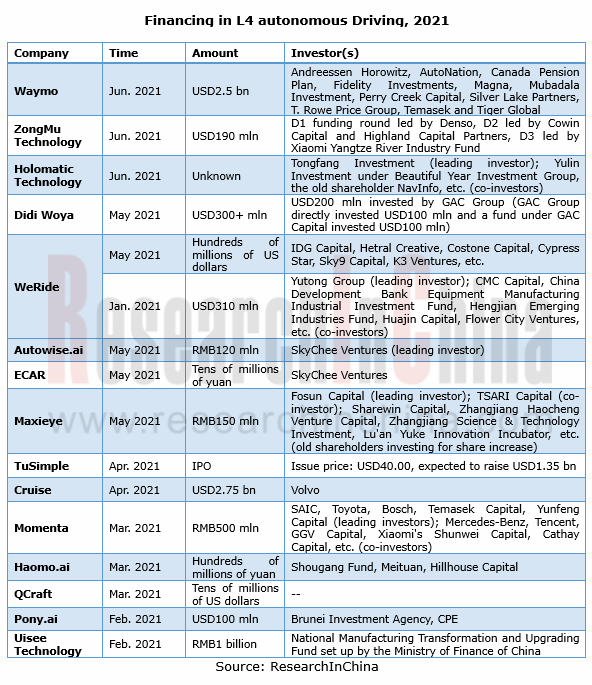
Cost reduction” and “dimension reduction application” bring development opportunities to L4 autonomous driving companies.
Too high cost has been an inevitable practical challenge in commercialization of L4 autonomous driving. The hardware devices for a L4 autonomous vehicle generally include: 6-12 cameras, 3-12 radars, 1-3 LiDARs, 2 GNSSs/IMUs and 2 computing platforms (including the redundant one). As the technology advances, the cost of hardware is on the decline.
On one estimate, the cost of hardware for a set of L4 autonomous driving system of Toyota is RMB40,000 or so. Wherein, the main front LiDAR costs the most, roughly RMB10,000 to RMB15,000; the combined cost of the two side LiDARs stands at RMB5,000 to RMB8,000; that of the 3 ECUs is RMB12,000 to RMB14,000. The dilution of software cost is accompanied by the rising sales.
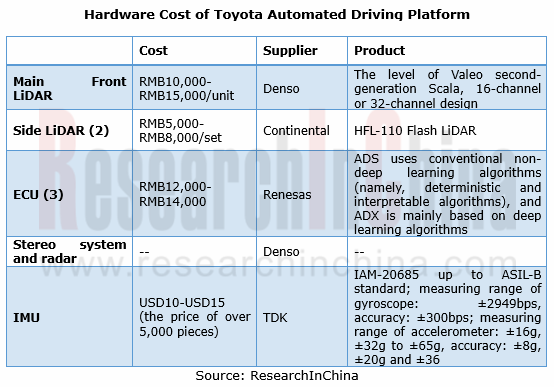
In China, Baidu introduced Apollo Moon, its new-generation mass-produced Robotaxi in June 2021, with cost expected to be slashed to RMB480,000, a third of that of current L4 mass-produced autonomous models. The ARCFOX αT-refitted vehicle adopts the ANP-Robotaxi architecture, and packs 13 cameras, 1 LiDAR, 5 radars and Baidu's self-developed central computing platform with computing force up to 800TOPS.
In July 2021, GAC AION and Huawei launched the cooperative project AH8 model, their first co-developed large-sized intelligent full-electric SUV based on GAC GEP3.0 Chassis Platform and Huawei Computing and Communication Architecture (CCA). The L4 autonomous car is projected to be spawned in late 2023.
As costs go down, we predict RMB300,000 autonomous vehicles with L4 autonomy will come out in the next 2 or 3 years.
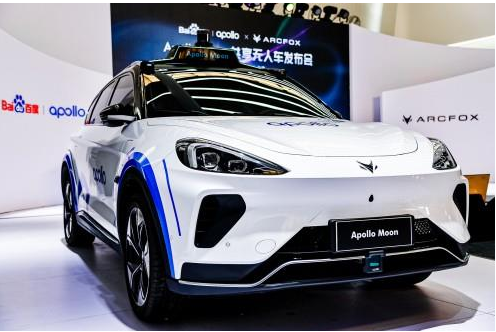
At present, L4 autonomous driving technology has yet to mature. Multiple automakers and technology providers have started dimension reduction application. AVP tends to be a key L4 autonomous driving technology deployed on mass-produced vehicles. For example, starting from AVP, Baidu will progressively achieve driving automation of passenger cars in all scenarios.
In January 2021, Weltmeister W6, a Baidu AVP-enabled mass-produced L4 model, rolled off the assembly line. As the world’s first model of such kind, the car carries 5 cameras, 12 ultrasonic radars and Baidu's autonomous driving computing platform ACU. The AVP solution consists of just cameras and ultrasonic radars, making its cost available.
In July 2021, Baidu and Great Wall Motor built in-depth cooperation on AVP. They plan to equip WEY Mocha with Baidu AVP that is based on Apollo software algorithms and up to ASIL-B functional safety standard, enabling L4 autonomous parking within visual range. It is predicted that the new model is about to be launched on market in the second half of 2021.
In addition, the auto parts giant ZF also tries hard to deploy AVP, in hope of developing future-oriented autonomous driving technologies with AVP as a starting point. In April 2021, ZF first released its AVP technology which enables automated parking via CalmCar 360° surround view perception and ultrasonic radars; in June, ZF led a USD150 million C round financing for CalmCar. They have forged a strategic partnership to develop a cost-effective AVP system, and plan to use it in mass-produced models of OEMs in China in 2022.
L4 autonomous driving for commercial vehicles enters the phase of cross-scenario mass production and application.
The demission of John Krafcik, Google Waymo’s CEO, becomes a watershed in the industry. It indicates that it is hard to achieve commercial operation of L4 autonomous driving in real terms by depending on tests and verifications in ideal conditions. Given this, large companies have started developing multi-scenario application solutions to amass data and iterate algorithms in actual operating scenarios.
In the near future, L4 autonomous driving layout will target designated scenarios, especially shared mobility, trunk logistics, autonomous delivery, and (semi-) closed scenarios.
L4 autonomous driving providers are working hard on application of the technology in different scenarios. Examples include Baidu Apollo with technical expertise in Robotaxi, autonomous minibus and autonomous parking, and providers like Waymo and Pony.ai which turn to autonomous logistics and delivery from Robotaxi.
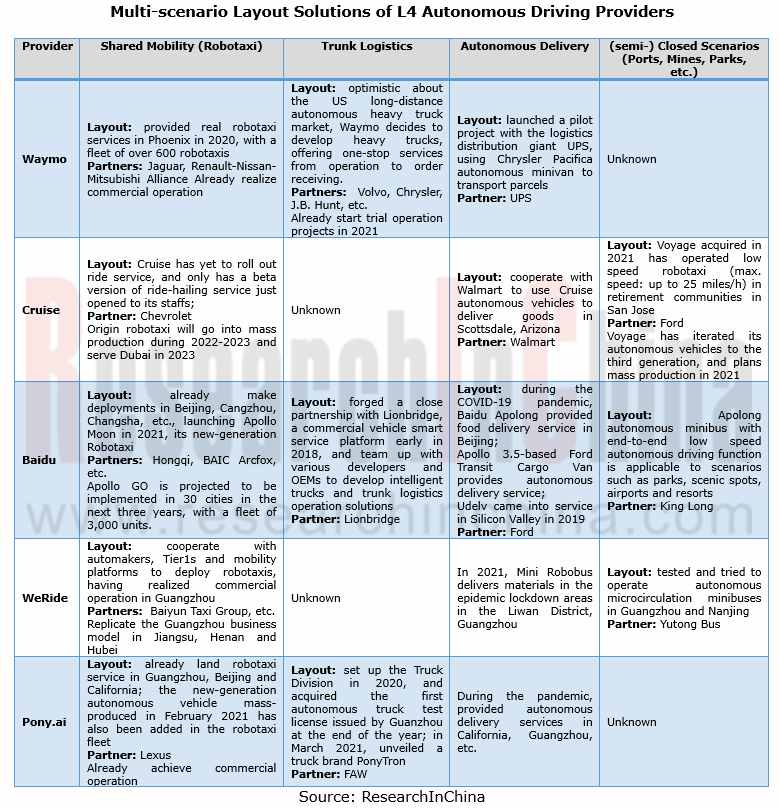
Waymo: by the end of 2020, Waymo has boasted a fleet of more than 600 Robotaxi. In 2021, Waymo plans to introduce a fleet of 100 Jaguar I-PACE autonomous vehicles equipped with the latest fifth-generation software and hardware.
In terms of autonomous commercial vehicles, following its in-depth cooperation with Volvo in 2020, Waymo partnered closely with Fiat Chrysler Automobiles (FCA) to manufacture autonomous commercial trucks, and introduced Waymo Via trucking service tested on roads in two states of the US.
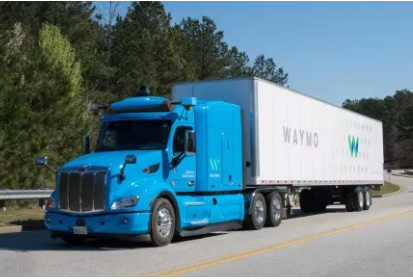
Motional: in March 2020, Hyundai and Aptiv set up a joint venture, a L4/L5 autonomous vehicle developer that integrated the resources of NuTonomy. The founding of this joint venture noticeably quickened their pace of deploying autonomous driving.
In October 2020, Motional and Lyft announced the resumption of their self-driving mobility service in Las Vegas; in March 2021, Motional indicated it will select Ambarella CVflow? SoC family for its autonomous vehicles; in June 2021, Motional said it will launch nuPlan, an extended public dataset.
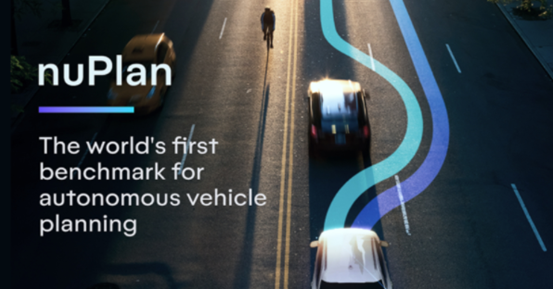
Pony.ai: in February 2021, Pony.ai’s first Robotaxis with the latest system rolled off its standard production line; in April 2021, Pony.ai upgraded PonyPliot+ Robotaxi service in all aspects; in May 2021, the Robotaxi service was landed in Yizhuang, Beijing.
As for autonomous commercial vehicles, Pony.ai set up its Truck Division in 2020 and acquired its first autonomous truck test license issued by Guangzhou at the end of the year; in March 2021, it introduced its truck brand—PonyTron.
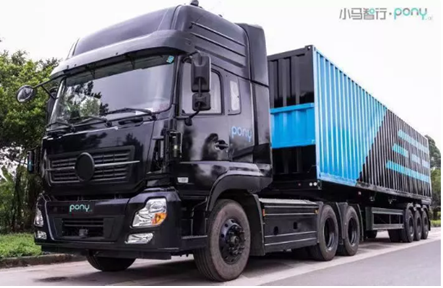
Although the whole highly automated driving industry still faces a range of challenges such immature supply chain, very high cost, not enough safety, and unsound laws and regulations, and needs some time for commercial application in all scenarios, L4 autonomous driving technology is getting rapid upgrade and the overall cost is dropping, which makes the commercial use in designated scenarios an expectation.
Our Global and China L4 Autonomous Driving and Start-ups Report, 2021 highlights the following:
 Autonomous driving industry (main technologies, status quo of autonomous driving test, investment and financing, policies, standards, etc.);
Autonomous driving industry (main technologies, status quo of autonomous driving test, investment and financing, policies, standards, etc.);
 L4 autonomous driving market (size, competitive pattern, technology trends, etc.);
L4 autonomous driving market (size, competitive pattern, technology trends, etc.);
 Development of L4 autonomous driving technologies (computing platform, high-precision positioning, etc.) in China (technical solutions of providers, mass production plans of OEMs, etc.);
Development of L4 autonomous driving technologies (computing platform, high-precision positioning, etc.) in China (technical solutions of providers, mass production plans of OEMs, etc.);
 Implementation of L4 autonomous driving (business models, main application scenarios (Robotaxi, autonomous delivery, etc.), etc.);
Implementation of L4 autonomous driving (business models, main application scenarios (Robotaxi, autonomous delivery, etc.), etc.);
 Main Chinese and foreign L4 autonomous driving technology providers (layout, application, etc.).
Main Chinese and foreign L4 autonomous driving technology providers (layout, application, etc.).
Passenger Car Mobile Phone Wireless Charging Research Report, 2025
Automotive Wireless Charging Research: Domestic Installation Rate Will Exceed 50%, and Overseas Demand Emerges as Second Growth Driver.
The Passenger Car Mobile Phone Wireless Charging Research Repor...
Automotive 4D Radar Industry Research Report 2025
4D radar research: From "optional" to "essential," 4D radar's share will exceed 50% by 2030.
1. 4D imaging radar has transformed from an "optional" to a "must-have" sensor.
4D radar adds the detecti...
China Automotive Multimodal Interaction Development Research Report, 2025
Research on Automotive Multimodal Interaction: The Interaction Evolution of L1~L4 Cockpits
ResearchInChina has released the "China Automotive Multimodal Interaction Development Research Report, 2025"...
Automotive Vision Industry Report, 2025
Automotive Vision Research: Average Camera Installation per Vehicle Reaches 5.2 Units, and Front-View Tricam Installation Exceeds 1.2 Million Sets.
From January to September 2025, the total installa...
Automotive Infrared Night Vision System Research Report, 2025
Automotive night vision research: The rise of infrared AEB, with automotive infrared night vision experiencing a 384.7% year-on-year increase from January to September.
From January to September 2025...
New Energy Vehicle Cross-Domain (Electric Drive System and Powertrain Domain) Integration Trend Report 2025-2026
Electric Drive and Powertrain Domain Research: New technologies such as three-motor four-wheel drive, drive-brake integration, and corner modules are being rapidly installed in vehicles.
Electric dri...
Analysis on Desay SV and Joyson Electronic's Electrification, Connectivity, Intelligence and Sharing, 2025
Research on Desay SV and Joyson Electronic: Who is the No.1 Intelligent Supplier?
Both Desay SV and Joyson Electronic are leading domestic suppliers in automotive intelligence. "Analysis on Desay SV ...
OEMs and Tier 1 Suppliers' Cost Reduction and Efficiency Enhancement Strategy Analysis Report, 2025
ResearchInChina released the "OEMs and Tier 1 Suppliers' Cost Reduction and Efficiency Enhancement Strategy Analysis Report, 2025", summarizing hundreds of cost reduction strategies to provide referen...
Automotive Fixed Panoramic Sunroof and Smart Roof Research Report, 2025
With the intelligent application of car roofs as the core, this report systematically sorts out a series of new products such as fixed panoramic sunroof/openable sunroof, ceiling screen, roof ambient ...
Automotive-Grade Power Semiconductor and Module (SiC, GaN) Industry Research Report, 2025
SiC/GaN Research: Sales volume of 800V+ architecture-based vehicles will increase more than 10 times, and hybrid carbon (SiC+IGBT) power modules are rapidly being deployed in vehicles.
Sales volume o...
Cockpit Agent Engineering Research Report, 2025
Cockpit Agent Engineering Research: Breakthrough from Digital AI to Physical AI
Cockpit Agent Engineering Research Report, 2025 starts with the status quo of cockpit agents, summarizes the technical ...
Prospective Study on L3 Intelligent Driving Technology of OEMs and Tier 1 Suppliers, 2025
L3 Research: The Window of Opportunity Has Arrived - Eight Trends in L3 Layout of OEMs and Tier 1 Suppliers
Through in-depth research on 15 OEMs (including 8 Chinese and 7 foreign OEMs) and 9 Tier 1 ...
China Commercial Vehicle IoV and Intelligent Cockpit Industry Research Report 2025
Commercial Vehicle IoV and Cockpit Research: The Third Wave of Passenger Car/Commercial Vehicle Technology Integration Arrives, and T-Box Integrates e-Call and 15.6-inch for Vehicles
I. The third wav...
Intelligent Vehicle Electronic and Electrical Architecture (EEA) and Technology Supply Chain Construction Strategy Research Report, 2025
E/E Architecture Research: 24 OEMs Deploy Innovative Products from Platform Architectures to Technical Selling Points
According to statistics from ResearchInChina, 802,000 passenger cars with domain...
Research Report on Intelligent Vehicle Cross-Domain Integration Strategies and Innovative Function Scenarios, 2025
Cross-Domain Integration Strategy Research: Automakers' Competition Extends to Cross-Domain Innovative Function Scenarios such as Cockpit-Driving, Powertrain, and Chassis
Cross-domain integration of ...
China Autonomous Driving Data Closed Loop Research Report, 2025
Data Closed-Loop Research: Synthetic Data Accounts for Over 50%, Full-process Automated Toolchain Gradually Implemented
Key Points:From 2023 to 2025, the proportion of synthetic data increased from 2...
Automotive Glass and Smart Glass Research Report, 2025
Automotive Glass Report: Dimmable Glass Offers Active Mode, Penetration Rate Expected to Reach 10% by 2030
ResearchInChina releases the Automotive Glass and Smart Glass Research Report, 2025. This r...
Passenger Car Brake-by-Wire (BBW) Research Report, 2025
Brake-by-Wire: EHB to Be Installed in 12 Million Vehicles in 2025
1. EHB Have Been Installed in over 10 Million Vehicles, A Figure to Hit 12 Million in 2025.
In 2024, the brake-by-wire, Electro-Hydr...